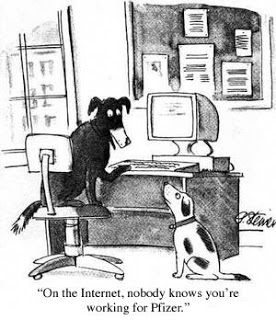 In his book “The Wisdom of Crowds: Why the Many Are Smarter Than the Few and How Collective Wisdom Shapes Business, Economies, Societies and Nations,” author James Surowiecki argued that aggregate information gleaned from groups results in decisions that are often better than could have been made by any single member of the group.
In his book “The Wisdom of Crowds: Why the Many Are Smarter Than the Few and How Collective Wisdom Shapes Business, Economies, Societies and Nations,” author James Surowiecki argued that aggregate information gleaned from groups results in decisions that are often better than could have been made by any single member of the group.
It all depends on how you define “GROUP”or “CROWD.” What if it’s only a few “knuckleheads?” That’s what Dan McKillen asked in his recent MM&M “Web Watch” column:
“Online communities have a substantial amount of influence on almost all web users. Product reviews, visitor comments and recommendations posted online are second to word-of-mouth as a way to drive sales for all web users. The scary part is that so many of the comments, advice and postings come from only 1% of the community. Two or three knuckleheads with a laptop can have a profound influence by posting messages and responding to questions that all the lurkers absorb as factual user-generated content. And that’s fine if this 1% is really knowledgeable and honest. But what if they are hired by the local plastic surgeon or a state tourism agency to say nice things about their client?”
That is SO true!
I have a confession to make: on my Pharma Marketing Network Forums online community, out of 1,000 registered users and about 3,000 daily visitors, one individual does most of the posting and that individual is me! Not only do I post a lot of stuff under my real name, but I have several user names (persona) that I also post under. Occasionally, I even post anonymously!
I don’t expect a social networking site for pharmaceutical marketing professionals to be as interactive as a site for moms whose sons have ADHD. What my visitors are looking for is information they can trust and I provide that by posting RSS feeds from many different sources, including this blog.
Given that some experts like Dan believe the wisdom of social networks can be manipulated by special interests because so few members participate in the discussion, I find it curious that on the same page as Dan’s column in the December, 2008, issue of MM&M there was a news item about Sermo teaming up with Bloomberg so that investors can tap into the “wisdom” of Sermo’s physician crowd.
“Investors and analysts will be able to pose questions to physicians to gauge opinion and reactions to potentially market-changing information, such as company statements about the efficacy of therapies or media stories about adverse events” (see article).
This venture “gives users direct access to the observations and insights of Sermo’s 90,000-strong physician community.” According to McKillen, however, it may give investors access to only 900 physicians in the community, if that. Even if all these 900 were to respond to information requests, the 1% response rate is worse than response rates from direct mail campaigns or simple email!
 And don’t forget the “knucklehead” factor. It opens up a whole new world of physician influence by pharmaceutical companies — especially since Sermo has opened its doors to the pharma industry (see “Sermo CEO Talks About Pfizer Collaboration” and “Pfizer has a Gold Mine in Sermo!“).
And don’t forget the “knucklehead” factor. It opens up a whole new world of physician influence by pharmaceutical companies — especially since Sermo has opened its doors to the pharma industry (see “Sermo CEO Talks About Pfizer Collaboration” and “Pfizer has a Gold Mine in Sermo!“).
Imagine Pfizer docs lurking on Sermo who see that investors are asking about the adverse effects of a drug that Pfizer is developing. Maybe these docs can’t post comments anonymously, but they may get the word out to their Sermo “buddies” to post nice comments on their behalf. And then there’s always those physicians with their own special interests.
How are investors going to distinguish between the “really knowledgeable and honest” user-generated content from the “knucklehead” content? Inquiring minds — and us poser dogs — want to know.








![6 Digital Tools at the Center of Healthcare Digitalization [INFOGRAPHIC]](http://ec2-54-175-84-28.compute-1.amazonaws.com/pharma-mkting.com/wp-content/uploads/2021/04/6DigitalTools_600px-100x70.jpg)




